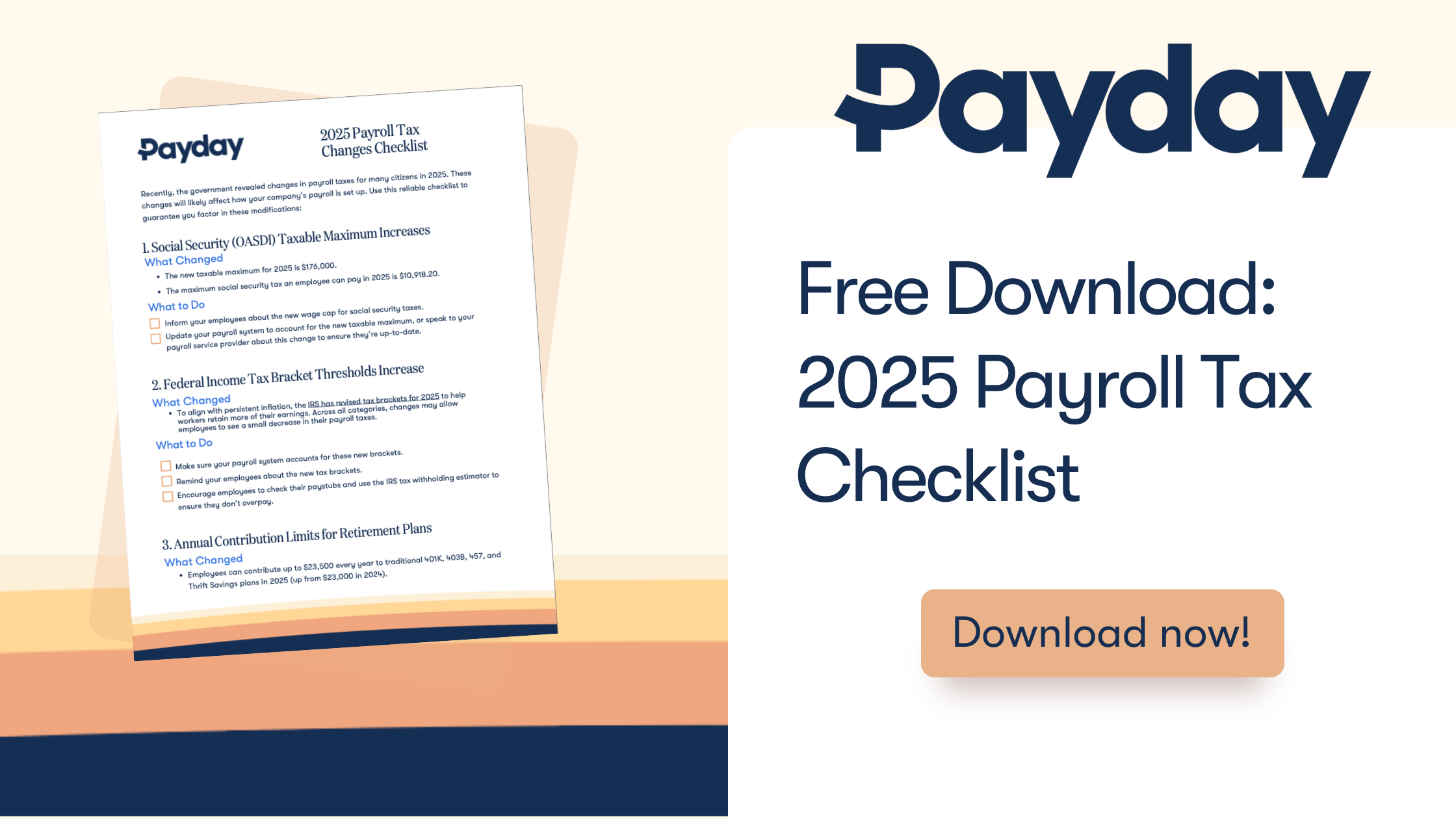Each year, employers are tasked with adapting to new or updated labor law regulations, which includes payroll tax changes that impact benefits administration, payroll and other facets of business. Whether it’s related to social security, retirement plan contributions, tax bracket thresholds, or changes in health security account (HSA) contributions, a number of payroll tax changes will impact employers and their employees in 2024.
Many of these changes have been enacted as a federal response to inflation, as well as other economic factors that have impacted the prices of everyday items and overall cost of living.
To help your business prepare for the new year, we’ll explore the four major payroll tax changes you’ll need to know to keep your employees informed and ensure compliance throughout 2024.
Increase in Yearly Contribution Limits for 401(k)s and Other Retirement Plans
For 2024, the annual contribution limit for many retirement plans has increased by $500 to a new threshold of $23,000. This allows employees to direct a higher amount of their pay towards their 401(k) or other qualifying plan, including a 457, Thrift Savings Plan, or 403(b). In conjunction with this change, a $1000 increase to catch-up contributions allows employees over the age of 50 to contribute up to a yearly threshold of $7,500 for any of the plans listed above.
As for IRAs, new yearly contribution thresholds have increased by $500 to $7,000. The IRA catch-up limit stays steady at $1,000. Participants who are 50 or older at the end of the calendar year can make catch-up contributions. In 2024, the annual contribution limit for SIMPLE IRAs is $16,000, and participants age 50 or older can make additional catch-up contributions of $3,500, for a total of $19,500.
To help you and your employees benefit from these changes, educate your employees about the updated 2024 contribution limits so they can evaluate or change their elective deferrals. Also be sure that your payroll system accurately processes these changes to incorporate new deferrals or contribution adjustments.
Increase in Yearly Contribution Limits for Health Savings Account (HSA)
As an extension of changes made to retirement contribution limits, individual contribution limits to HSAs have also increased to $4,150 for self-coverage and $8,300 for individual employees using family coverage. These changes in 2024 allow employees to contribute more, lower their taxable earnings, and benefit from an increase to contribution limits compared to 2023.
Similar to retirement contribution limit changes, it’s important to inform your employees about the updated annual limits to HSAs and ensure that any adjusted or newly enrolled accounts are accurately managed by your payroll provider.
Increase of Social Security Wage Base
For 2024, the federal social security wage base has increased to $168,000. Despite this wage base change, the social security tax rate of 6.2% remains steady. Similarly, Medicare taxes will sustain the same withholding rate of 1.45% and will not include a cap to maximum wages. Like the changes to the social security wage base, high-earning employees will have to pay a higher total amount, and employees earning over $200,000 in taxable annual income must continue to pay 0.9% in additional Medicare taxes.
To keep your employees informed of changes, you should communicate the social security wage base/cap increase to all of your employees simultaneously by email or arrange an educational session to outline how the changes will impact their taxes, pay, etc. As soon as possible, you should also update your payroll software to incorporate the 2024 wage cap adjustment and keep your social security taxes properly managed organization-wide.
Change in Thresholds for Federal Income Tax Brackets
To align with persistent inflation, the IRS has revised tax brackets for 2024 to help workers retain more of their earnings. Across all categories, changes may allow employees to see a small decrease in their payroll taxes.
Updated Tax Rates and Taxable Income Brackets for 2024:
- 10% tax rate for those earning of $11,600 or less; $23,200 for joint-filing married couples
- 12% tax rate for those earning over $11,601; $23,201 for joint-filing married couples
- 22% tax rate for those earning over $47,151; $94,301 for joint-filing married couples
- 24% tax rate for those earning over $100,526; $201,051 for joint-filing married couples
- 32% tax rate for those earning over $191,951; $383,901 for joint-filing married couples
- 35% tax rate for those earning over $243,726; $487,451 for joint-filing married couples
- 37% tax rate for those earning over $609,350; $731,200 for joint-filing married couples
Your payroll provider and software should be capable of adapting to these taxable income bracket changes and protecting employees from overpayment of federal income tax. If your employees need to resubmit their W-4 forms to align with these changes, be sure to offer assistance and resources to support them.
Ensure Compliance and Tax Savings in 2024
Since each year brings a host of major and minor changes to payroll taxes and other facets of HR, it’s essential to have professional support to manage the process and maximize tax benefits for your business and employees. We’ve created a convenient 2024 payroll tax checklist to help your business stay updated with payroll tax changes and take the necessary first steps to enjoy year-long compliance, tax savings, and employee satisfaction.
If you’re ready for more comprehensive help with payroll, let us take the headaches out of payroll administration by implementing long-term solutions that seamlessly integrate with HR, benefits, time & attendance, onboarding, and more. We’re here to support you every step of the way. Contact us today to keep your payroll streamlined, compliant, and stress-free in 2024 and beyond.


